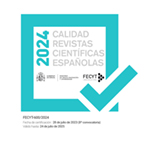Fünf Schwierigkeiten beim Schreiben der Wahrheit: Typologie der Übersetzungsprobleme von Heines Lyrik ins Spanische
Abstract
Jeder Übersetzer Heinescher Lyrik und Prosa stand schon einmal vor der Schwierigkeit, wenn nicht Unmöglichkeit, bestimmte Vokabeln (in ihrer Mehrzahl Nominalkomposita) adäquat in die Zielsprache zu überführen. Die vorliegende Studie untersucht eine Reihe von Belegen für die verschiedenen Kategorien von Neologismen und anderer Tropen, mit denen Heine voller boshafter Wonne seine Text spickte. Jede dieser Übersetzungsschwierigkeiten wird nach den verschiedenen Bedeutungen klassifiziert, die durch die kulturelle Vorbelastung des deutschsprachigen Lesers entstehen. Nach der Erstellung einer Taxonomie schlage ich mögliche Translationsstrategien für zukünftige Übersetzer vor: 1) Infratranslation; 2) Hypertranslation; 3) Paraphrasierung; 4) Texttilgung, 5) Kompensierung durch Umschreibung oder erklärende Fußnoten; 6) Kompensierung für den Verlust an semantischem, konnotiertem oder pragmatisch-diskursivem Gehalt, und 7) Transkodierung zum Zweck einer funktionalen Äquivalenz.Downloads
##submission.format##
Licenza
La revista Estudios de Traducción, para fomentar el intercambio global del conocimiento, facilita el acceso sin restricciones a sus contenidos desde el momento de su publicación en la presente edición electrónica, y por eso es una revista de acceso abierto. Los originales publicados en esta revista son propiedad de la Universidad Complutense de Madrid y es obligatorio citar su procedencia en cualquier reproducción total o parcial. Todos los contenidos se distribuyen bajo una licencia de uso y distribución Creative Commons Reconocimiento 4.0 (CC BY 4.0). Esta circunstancia ha de hacerse constar expresamente de esta forma cuando sea necesario. Puede consultar la versión informativa y el texto legal de la licencia.









